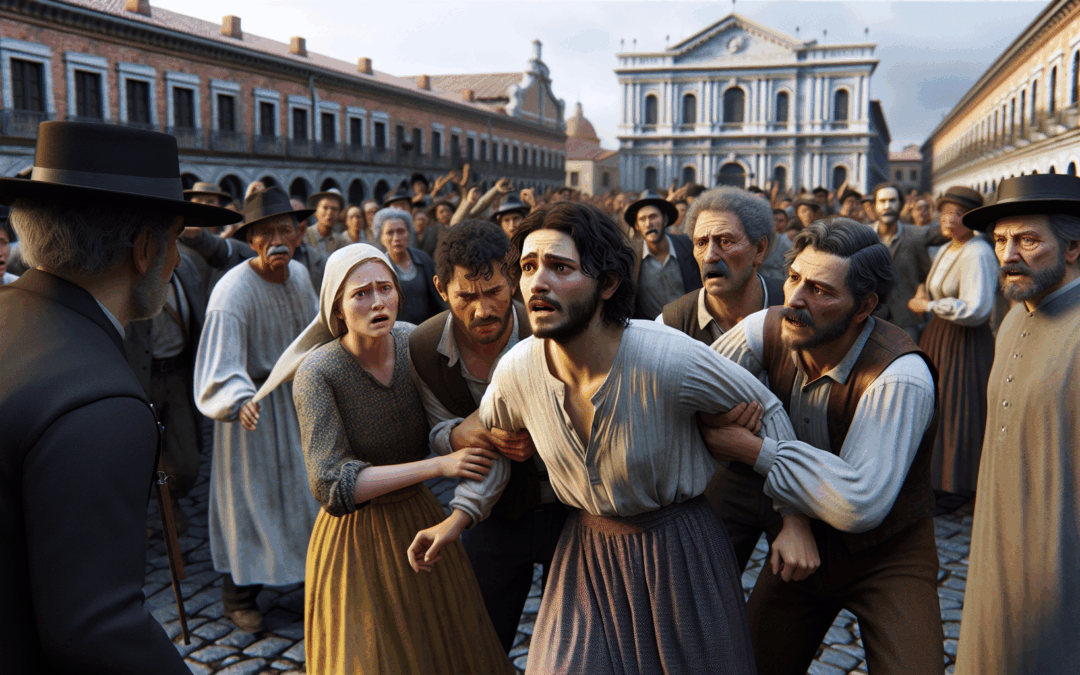The Tightrope of Enforcement: Walking the Balance Between Justice and Order
In today’s hyper-connected society, the boundaries of journalism, transparency, and public engagement are constantly being redefined. The recent incident involving the self-proclaimed “citizen journalists” Enrico and Anselmo showcases this evolution—and highlights the complicated roles that law enforcement must now play. When these individuals take on the mantle of discoverers of the truth, they may very well be driven by noble intentions. Yet, even the best intentions must operate within the framework of our legal system, a structure designed to ensure safety and order—tenets that are becoming increasingly difficult to uphold.
For law enforcement officers, each shift involves more than just donning a uniform. It involves embodying the principles of trust, courage, and fairness within a community that varies just as frequently in circumstance as in perspective. It’s about navigating real-time decisions with weighty implications, knowing that each action—or inaction—will be scrutinized and potentially become fodder for online debates, viral videos, or social media trending stories. The reality is stark. As enforcers of the law, officers are expected to be bastions against chaos while also being flexible to modern societal expectations.
At the core of these encounters is the paramount necessity of maintaining order in a society increasingly questioning the very instruments it devised to maintain civility. Enrico and Anselmo, with cameras rolling, find themselves at the intersection of age-old laws and contemporary expectations of transparency and accountability. This incident underscores that what was once a straightforward pursuit of journalism is now complicated by the immediacy of the digital age where facts and narratives intermingle, often shedding more heat than light.
When laws are interpreted as overbearing or obsolete, the authority tasked with their enforcement finds itself under the microscope. In the age of the viral public court, an officer’s badge evolves beyond a symbol of authority into a target of skepticism. The John Ligato Show offers a remarkable lens into this phenomenon (subscribe here). In Part 2 of his deep dive, John Ligato dissects the frictions arising at the frontline of these heated exchanges, examining not just the event but the implications on societal trust and civic discourse (watch the episode here).
While society’s need for transparency is valid and justified, it must be pursued responsibly. Encounters marked with inflammatory language or unwarranted provocation ultimately endanger transparent dialogue—it becomes a confrontation as opposed to collaboration aimed at building community trust. The restraint showcased by officers is often overlooked due to this narrative overshadowed by sensationalism.
The protocols followed when dealing with individuals challenging the law underscores a dual responsibility. Firstly, to act in accordance with the law’s letter and spirit, ensuring community safety. Secondly, to engage the public constructively, facilitating understanding of the intricate nature of law enforcement. Efforts such as community policing initiatives and regular public safety meetings emerge as vital tools to bridge the ever-widening trust deficit between citizens and law enforcement agencies.
However, as officers strive for community engagement, the obstacle remains: The false dichotomy in public narrative that pits ‘the police’ against ‘the people.’ The radio show host John Ligato frequently touches on the idea that societal change is not predicated solely upon public or official initiative, but through a reciprocal relationship between both entities. Engage further with this dynamic discussion on his Facebook page.
Every day, a law enforcement officer rehearses the oath to protect and to serve. It is this oath that propels countless brave officers to place themselves between society and those that momentarily forget civility. Society reflects a unified front against lawlessness, and beneath the vast, thin blue line is a collective synergy that fosters safety. Their vigilance does not diminish in the face of criticism or potential fallout. The commitment to justice compels officers towards an earnest desire for just enforcement—a commitment requiring unyielding diligence, even confrontation with societal shifts echoing louder every day.
Let us then stand at the threshold, aware of what extends before us—a society whose understanding must evolve alongside its citizens. We must collectively envision a future where confrontation nurtures discourse, where authority gains public consent, and where our communities uplift humanity’s shared values through maturity and respect. Today’s reality may puzzle us, posing a world where roles fluctuate yet safety dictates sanity—a time marked by both innovation and challenge striking us with unforgettable immediacy.
As public vanguards, it’s not compromise but commitment to ideals that secures societal gains. No incident involving law enforcement and citizens should ever meet without reflection and understanding; for we either rise together with empathy and resolute action or face the lasting consequences of isolated interpretations tinged by narratives sidelining truth for friction’s pale shadows.
The tasks ahead are challenging, undeniably demanding insight from both those who watch and those watched, enabling a path towards authentic dialogue fostering truth—set not upon fringes but immersed within a thriving society’s living fabric. Moving forward, every community-aligned officer continues not simply being vigilant but emerges as a true liaison between liberty understood intrinsically like right. This pursuit necessitates unbiased diligence from all community stalwarts persevering passionately across life’s intricate artistry.
Visit The John Ligato Show via YouTube or Facebook page for further enlightening deliberations surrounding these pivotal ongoing societal narratives.

Recent Comments